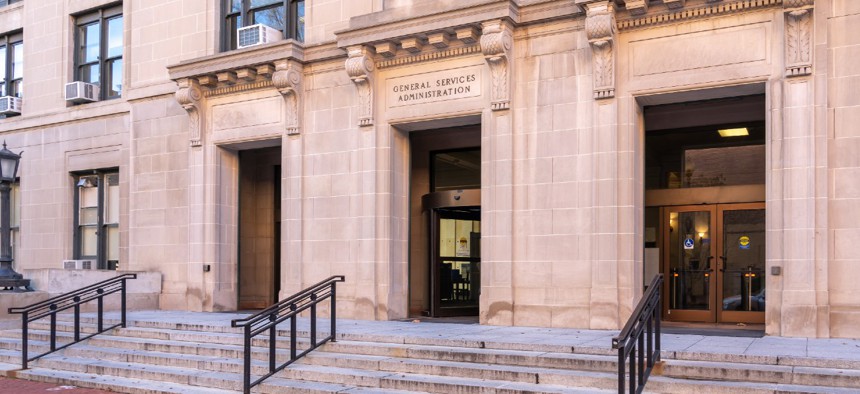
JHVEPhoto / iStock.com
Watchdog: GSA Didn’t Always Follow Proper COVID-19 Procedures Early On
Agency says issues with delays in notification of positive cases and oversight of pandemic-related cleaning have been addressed.
Early on in the novel coronavirus pandemic, the federal government’s landlord did not always follow proper public health procedures to protect building occupants, a watchdog recently reported.
The August 26 report from the General Services Administration inspector general followed a review launched in May 2020 of how GSA’s Public Buildings Service largely mishandled coronavirus procedures in the early months of the pandemic. The buildings service acquires and leases federal properties nationwide as well as owns or leases more than 8,800 assets, maintains more than 370 million square feet of workspace for federal employees and preserves more than 500 historic properties.
“[The Public Buildings Service] did not always take appropriate action to limit the risk of exposure to COVID-19 in its owned and leased facilities,” said the report. The GSA branch did not always “receive or provide timely notice of positive COVID-19 incidents in accordance with [its] notification process,” the report said, and did not regularly “provide contractors with the correct scope of work to conduct detailed cleaning and disinfection services” or “implement consistent inspection and quality assurance procedures for COVID-19 custodial services.” Therefore, the buildings service could not ensure that contractors cleaned and disinfected spaces in adherence to Centers for Disease Control and Prevention and its own guidance.
As part of the review, the IG looked at a sample of 33 of the 1,210 positive coronavirus cases reported in GSA-owned and leased locations between July 1 and September 4, 2020, which included three cases from each of GSA’s 11 regions.
In five of the 33 incidents, the IG found delays––between two and five days–– from when tenant agencies were made aware of the positive cases and when they notified the Public Buildings Service. “As a result, [the GSA unit] could not timely notify all building occupants about contaminated space,” said the report.
In six cases, the buildings service did not notify building occupants in line with its notification process for suspected or confirmed coronavirus cases, and in four cases, the buildings service didn’t alert contractors who were in the facility at the time of the positive case.
Another specific finding was that “in nine instances, PBS did not work with contractors to enhance or modify [quality control plans]; nor did PBS enhance or modify [quality assurance surveillance plans] to include a surveillance method for pandemic-related cleaning,” said the report. “Without adequate quality control and assurance procedures, PBS cannot ensure the delivery of safe, efficient, and effective custodial services for these pandemic-level cleanings.”
As a result, the IG made five recommendations, which included issuing timely notifications to all occupants, visitors and contractors when there are positive COVID-19 cases in GSA facilities; ensuring proper cleaning procedures are followed when there is a case; and implementing an oversight procedure for custodial services.
“We agree that there were limitations in GSA’s initial COVID-19 response procedures,” wrote Nina Albert, appointed by President Biden in July as PBS commissioner, in an August 9 response to the IG office. However, “PBS has appropriately addressed these findings in response to OIG’s 2020 memorandum.”
The 2020 memo, issued on September 3, 2020, outlined a lot of the same issues as the new IG report. Then on January 15, 2021, the watchdog issued an alert memo saying the agency was hampering its efforts to oversee its COVID-19-related activities. This came the day after GSA Administrator Emily Murphy resigned as the Trump administration was winding down.
“GSA notified us in February 2021 that it has ceased the centralized review of responses to our oversight requests,” which was one of the issues the IG previously flagged, said the new report. “Subsequently, we conducted additional procedures to ensure that the evidence was sufficient and appropriate to address our objectives and support our audit findings and conclusions.”







